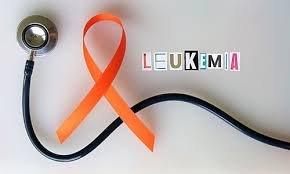Leukemia
Leukemia is a type of cancer that affects the blood and bone marrow, the spongy tissue inside bones where blood cells are made. It involves the uncontrolled proliferation of abnormal white blood cells. These abnormal cells outcompete normal blood cells, impairing the body’s ability to fight infection, carry oxygen, and control bleeding.
Table of Contents
Leukemia is a type of blood cancer characterized by the rapid proliferation of abnormal blood cells. This uncontrolled growth occurs in the bone marrow, which is the main site of blood cell production in the body. Leukemia cells are usually immature white blood cells that are still developing. The term “leukemia” is derived from the Greek words “leukos” meaning “white” and “hyema” meaning “blood”.
Unlike many other types of cancer, leukemia does not usually form a mass (tumor) that can be detected by an imaging test such as an X-ray or CT scan.
There are different types of leukemia. Some are more common in children and some are more common in adults. Treatment options depend on the specific type of leukemia and other individual factors.
Types Of Leukemia
- Acute Lymphoblastic Leukemia (ALL) : Rapidly progressing and affects lymphoid cells.Acute lymphoblastic leukemia (ALL) is the most common type of leukemia in children, adolescents, and young adults up to age 39. However, acute lymphocytic leukemia can affect adults of all ages.
- Acute Myeloid Leukemia (AML) : Rapidly progressing and impacts myeloid cells.Acute myeloid leukemia (AML) is the most common type of acute leukemia in adults, especially people over 65 years of age. However, chronic myeloid leukemia can also occur in younger people.
- Chronic Lymphocytic Leukemia(CLL) : Slowlely progressing and effects lymphoid cells.Chronic lymphocytic leukemia (CLL) is the most common type of chronic leukemia in adults, especially those over the age of 65. Symptoms of chronic lymphocytic leukemia may not appear for many years.
- Chronic Myeloid Leukemia(CML) : Slowly progressing and effects myeloid cells.Chronic myeloid leukemia (CML) is more common in older people, especially those over 65, but it can affect adults of any age. It is rarely seen in children. Symptoms of chronic myeloid leukemia may not appear for many years.
How Common is Leukemia
Leukemia is the tenth most common cancer in the Pakistan , accounting for 5.3 percent of all new cancer cases According ASCO Publications.. Although leukemia can affect anyone, it is most common in people who:
- Between 65 and 74 years old.
- Assigned male at birth (AMAB).
- Caucasian/white.
- Although many people associate leukemia with childhood cancers, some forms are more common in adults. Although rare in children, leukemia is the most common type of cancer affecting children and teens.
Symptoms
Symptoms vary depending on the type of leukemia but often include:
- Fatigue and weakness.
- Recurrent or severe infections
- Fever or chills.
- Unexplained weight loss
- Enlarged lymph nodes, enlarged liver or spleen
- Bleeding or bruising easily
- Petechiae (small red spots under the skin)
- Bone pain or tenderness
What Causes Leukemia
Leukemia begins when the DNA of a cell in the bone marrow is changed. DNA acts as an “instruction code” that directs cell growth, development, and programmed death. Because of this mutation, leukemia cells continue to grow uncontrollably. All cells produced from the original mutant cell inherit the same mutant DNA
Scientists have not yet determined the exact cause of these mutations in developing cells. But they identified several mutations shared between people with different types of leukemia.
Risk Factors
Previous Cancer Treatments: Previous cancer treatments that included radiation or chemotherapy may increase the chance of developing certain types of leukemia. These treatments can damage DNA in healthy cells and cause mutations that can later lead to leukemia. Therefore, people receiving this treatment should be monitored for possible signs of leukemia.
Smoking: A history of smoking or exposure to secondhand smoke can increase your risk of developing acute myeloid leukemia (AML). Chemicals in tobacco smoke can damage the bone marrow and disrupt the normal production of blood cells, which can lead to the development of chronic myeloid leukemia. Therefore, individuals with such a history should be aware of this increased risk and consider regular health checkups for early diagnosis and management.
Exposure To Chemicals: Benzene and formaldehyde are carcinogenic chemicals commonly found in building materials and household products. Benzene is used in the production of plastics, rubber, paints, pesticides, medicines and soap. On the other hand, formaldehyde is also found in various building materials and household items such as soap, shampoo, and cleaning products. Exposure to these chemicals over time may increase your risk of developing certain types of cancer, including leukemia. Therefore, it is important to reduce exposure to these substances and take safety precautions when using them.
Certain Genetic Disorders: Genetic disorders such as neurofibromatosis, Klinefelter syndrome, Schuchman-Diamond syndrome, and Down syndrome may increase the risk of leukemia. A family history of leukemia may also play a role. Although research suggests that certain types of leukemia may run in families, it is important to remember that having a relative with leukemia does not guarantee that you or another family member will develop the disease. If you or a loved one has a hereditary condition, it is recommended that you inform your healthcare provider. They may recommend genetic testing to assess your risk and provide appropriate guidance.
Diagnosis
The results of a routine blood test may indicate to your health care provider that you may have an acute or chronic type of leukemia that requires additional testing. Alternatively, if you have symptoms of leukemia, your healthcare provider may also recommend a comprehensive evaluation.
Diagnosis exams and tests may include:
Physical Exam
During your consultation, your healthcare provider will ask about your symptoms and perform a physical examination. This examination may include palpation of enlarged lymph nodes, spleen, or liver. They may also check for signs of bleeding or swelling in your gums and spots associated with leukemia, which may appear as red, purple, or brown spots.
Complete Blood Count (CBC)
This blood test helps your healthcare provider determine if you have abnormal levels of red blood cells, white blood cells, and platelets. High levels of white blood cells are often seen in cases of leukemia.
Blood Cells Eamination
Your health care provider may collect additional blood samples to check for signs of leukemia cells or a specific type of blood cancer. Additional tests such as flow cytometry and peripheral blood smear may also be performed.
Bone Marrow Biopsy
If you have an abnormal white blood cell count, your healthcare provider may perform a biopsy. During the procedure, a long needle is inserted into the bone marrow (usually the pelvis) to drain fluid. A sample of the fluid is tested for leukemia cells in the laboratory. A bone marrow biopsy helps determine the percentage of abnormal cells in the bone marrow, which confirms a diagnosis of leukemia.
Imaging and Other Tests
If your symptoms indicate that leukemia is affecting your bones, organs, or tissues, your doctor may order a chest X-ray, CT scan, or magnetic resonance imaging (MRI). It is important to note that leukemia cells do not show up in these imaging tests. In addition, the health care provider may perform a lumbar puncture, also known as a spinal tap, to analyze a sample of spinal fluid. This test helps determine whether leukemia has spread to the spinal cord, which surrounds the brain and spinal cord.





